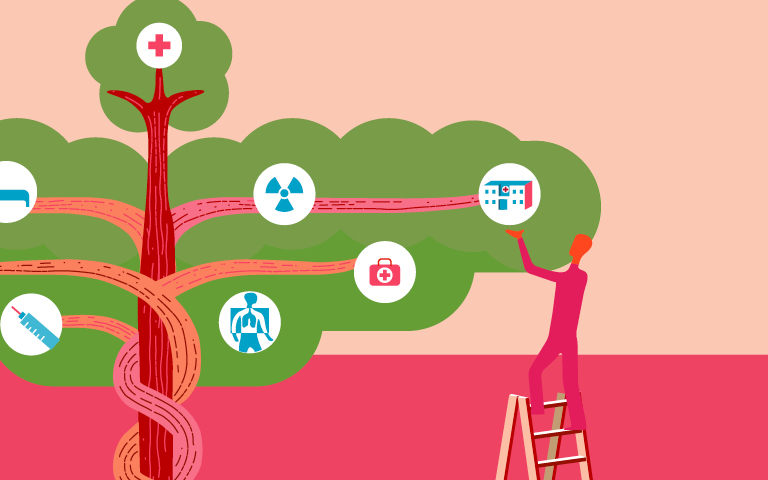For many, COVID-19 has exposed deep cracks in the U.S. healthcare system — for others, these cracks have been evident all along, but the combination of the pandemic and the death of George Floyd provided the perfect storm to bring these weaknesses to the fore. “COVID-19 revealed the rampant effects of racism on medicine,” says Daniel B. Chonde, MD, PhD, resident physician and co-chair of the department of radiology, diversity, and inclusion’s committee on education at Massachusetts General Hospital (MGH). Rather than bury our heads, though, now is the time to harness that attention and energy — and turn it into progress, Chonde says. “This is one of those times where you could be doomscrolling or you could do something about it,” he says.
Elyse R. Park, PhD, clinical associate in psychology at MGH and director of behavioral research for the MGH Tobacco Research andTreatment Center, the Benson-Henry Institute for Mind Body Medicine, and the MGH Cancer Survivorship Program, agrees. “I think the advocacy around healthcare access for vulnerable populations has really raised people’s awareness,” she says. “Those together really influence people’s awareness of health disparities at all institutional levels.”
So now that we see it, what can we do? Part of the answer lies in outreach, according to Chonde and Park, to communities and to medical students. According to Park, as the country settles in for the next wave of the pandemic, a key area in which institutions can start beefing up their efforts to combat inequities in healthcare — community outreach. “A longstanding issue with clinical research is that racial and ethnic minority populations have historically low enrollment rates in clinical trials,” she says. “That creates a cascading effect — all of that research does not represent these groups in terms of conclusions, but also long-term access to care. We have
been trying to create policies to allow us to do more community-based outreach to vulnerable populations, which we had not been able to get any traction on before.”
But, she says, there is tension between privacy issues and community outreach, and the right balance needs to be struck. “This is very basic but sometimes people have to consent before we do outreach, but we want to do outreach prior to consent,” Park says. “For example, in our current study, Screen Assist, we send patients
information about a study that provides free tobacco treatment support for patients undergoing lung cancer screening (LCS). We have created a video that features a physician who emphasizes the importance of quitting smoking and getting LCS. Yet, we have to respect patients’ privacy and not reveal that they are eligible for LCS. Unless we’re allowed to move forward and do more direct outreach into these vulnerable populations, we can’t accomplish what our research is intended to.”
COVID-19 revealed the rampant effects of racism on medicine.
Community outreach is especially important now, Park says, because with a second COVID-19 surge looming and no end in sight, there is growing concern amongst researchers that trends observed over the last few months will only worsen. “Folks in vulnerable populations were disproportionately affected, and unfortunately there’s a lot of concern about this trend continuing when there’s a vaccine,” she says. “There’s also a growing concern that existing disparities in cancer screening are going to widen — that URMs are going to be more hesitant and slower to return to preventive care because their communities have been disproportionately affected by COVID-19 and they want to limit their in-person exposure, which includes going to a hospital/clinic for screening. Racial and ethnic minorities already have later diagnoses traditionally, so then that just amplifies the cycle.”
Park notes that it’s important that radiologists advocate for remote treatment visits to the extent that they can, understanding the logistical challenges and particularly financial challenges of the populations that have been really hard-hit by COVID-19. “Try to think creatively about how you can reach out to patients in safe ways — promoting remote communication so that they don’t have to keep coming in to the hospital,” Park says.
Longer-term, really homing in on efforts to increase diversity in the field will be key, says Chonde. “Our job as radiologists is to be a place where any medical student feels safe. We should be soliciting diverse populations to choose radiology.” All in all, Chonde is optimistic. “With each of these crises, we’re able to make incremental steps,” he says. “My hope is that we’re able to capitalize on one of these events to ignite some lasting effects.”

